Attleboro Ablaze
The Great Fire of 1898
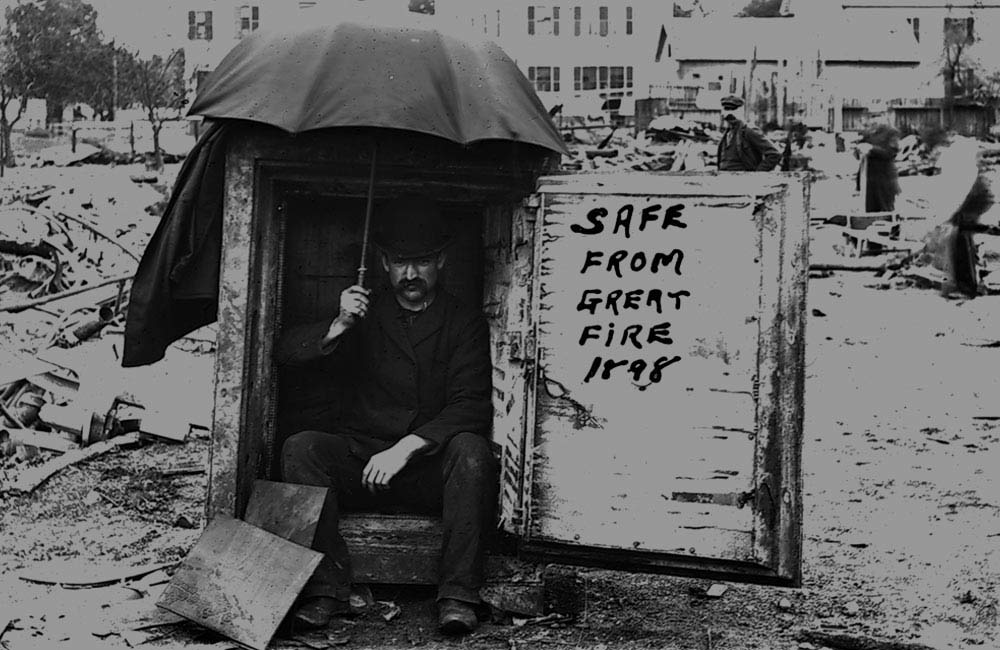
Images found on this page are from our historic photo collection. Use only with credit to the Attleboro Area Industrial Museum.
By the Numbers
7,500
Attleboro population in 1898
1,500
Attleboro population left out of work by the 1898 fire
$750K
Value of businesses/factories destroyed
3-4
Acres in total ruins
2+ Hours
How long it took to extinguish the fire
0*
Lives lost from the fire. (One death from heart attack.)
Part I:
Attleboro in 1898
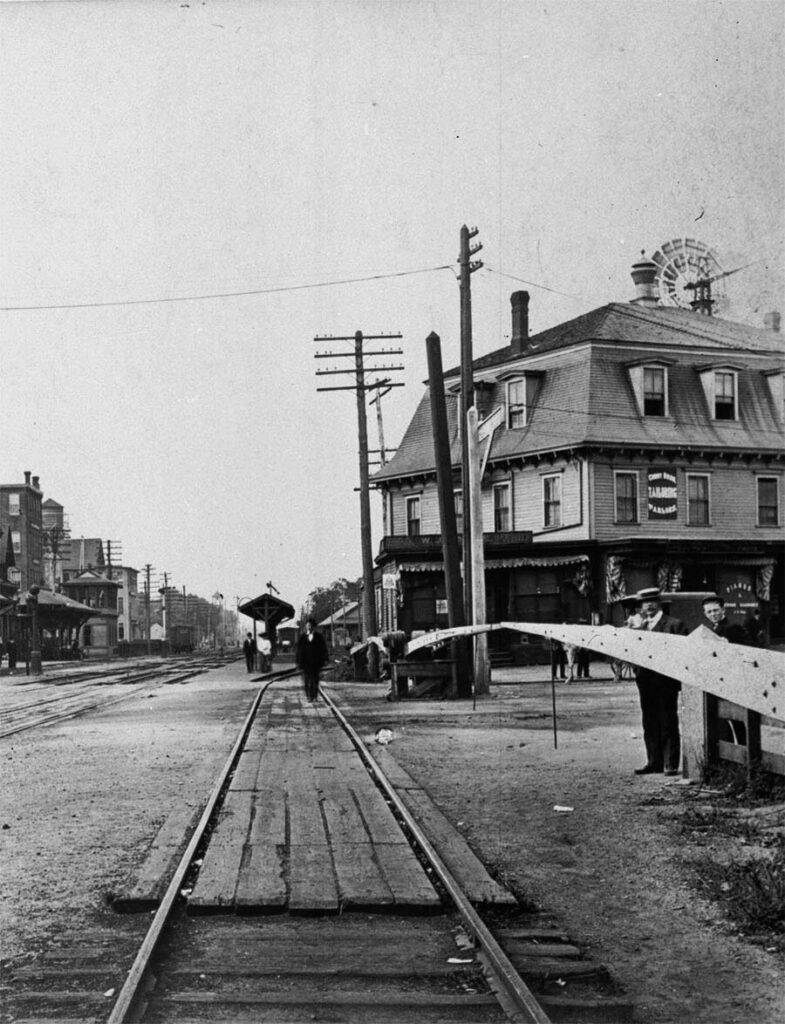
Image from our historic photo collection. Use only with credit to the Attleboro Area Industrial Museum.
What Did Attleboro Look Like Before the Great Fire?
Unsurprisingly, Union Street and Park Street in Attleboro looked quite a bit different in 1898 than it does today! Attleboro was a thriving industrial town (complete with trolley service) but had a modest population of about 7,500. Because 1898 was the year of the Spanish-American war, the town was hard at work producing patriotic jewelry. Many of the multi-story factories were located on Union Street (between the intersection of Park Street and Capron Street.)
Many of the largest factories in Attleboro were wooden structures with many windows—this was the style of the day.
Many famous buildings in Attleboro’s center were built at the time of the 1898 fire. This included Bates Block as well as the Horton and Sturdy building.
What Was Attleboro's Fire Service Like in 1898?
What did Attleboro learn from earlier fires?
In 1859, the Attleboro Steam and Electric Company building was burned. In response, Attleboro decided to establish an official fire department.
The fire department consisted of two horse-drawn carts with a hand-pump engine. It required 24 people to operate! Still, horse-drawn carts allowed Attleboro to fight fires that took place outside of the center of the city.
Attleboro had both a Main Street and a Union Street hose company (see photos below.) In addition to the hose companies, there were volunteers in other parts of the town.
What fire-fighting equipment did the town have in 1898?
Aside from the two hand-pump engines, Attleboro had two horse-drawn hose wagons and a light wagon. They had more than 6,000 feet of hoses and two horses. (Additional horses were contracted or provided by volunteers.) The downtown area also had a fire alarm system.
The town used a Water Tower, located off First Street, which provided 80 PSI of water pressure from steam power.
At the time of the fire, the town was in the middle of replacing sheet metal pipes with cast iron pipes. Unsurprisingly, the water pressure was lower in the areas that were under construction (including on Union Street and Mill Street.)
Images from our historic photo collection. Use only with credit to the Attleboro Area Industrial Museum.
What Were the Features of Bates Block and Park Street Factories?
Wooden Structures
Multi-Story
Oil-Soaked Floors
Chemicals Stored
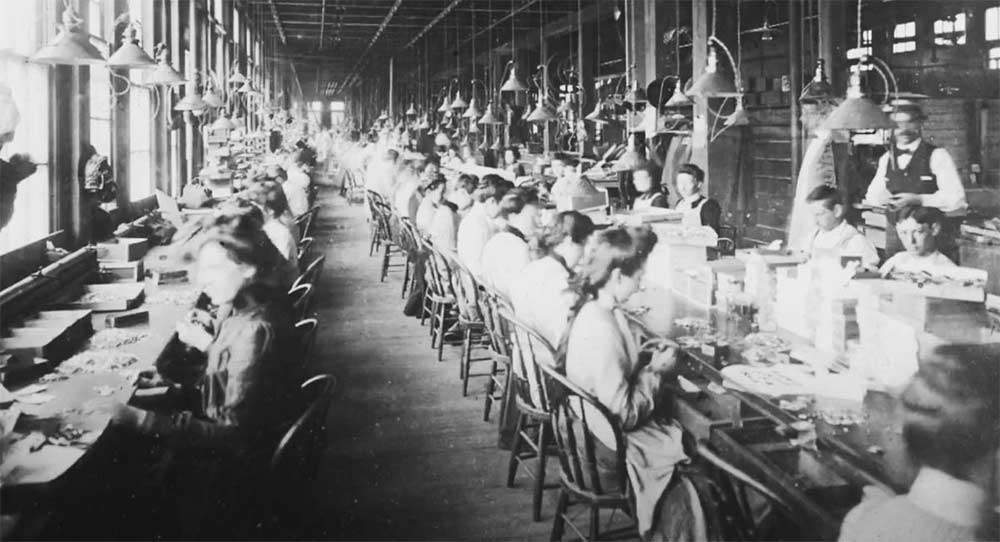
Image from our historic photo collection. Use only with credit to the Attleboro Area Industrial Museum.
Part II:
The Fire
May 18th, 1898: Attleboro Ablaze
On a windy May night, two sisters arrived on a 12:07 am train from Providence. On their walk back home from Union Street, they were one of the first people to notice the flames.
The fire began in the basement of the Bates & Bacon Watch Case building and spread rapidly. It is not known how the fire started.
At 12:30 am, a night watchman heard the first explosion. He found the north end of the Bates building engulfed in flames.
Attleboro already had an alarm system. Unfortunately, when the night watchman tried to pull the alarm, it didn’t work. But after several attempts, the alarm finally sounded.
Help was on the way.
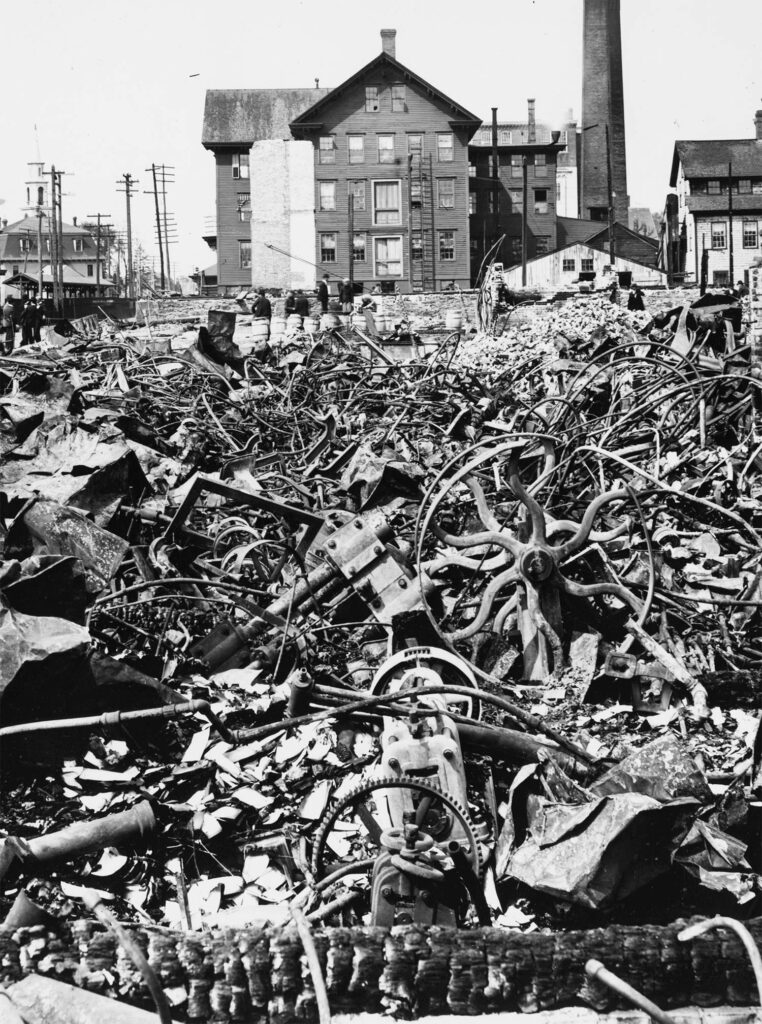
Image from our historic photo collection. Use only with credit to the Attleboro Area Industrial Museum.
"It does not appear the fire was preventable in any way, although perhaps if the buildings had been made of brick, it would not have spread as rapidly."
The Manufacturing Jeweler – May 19, 1898
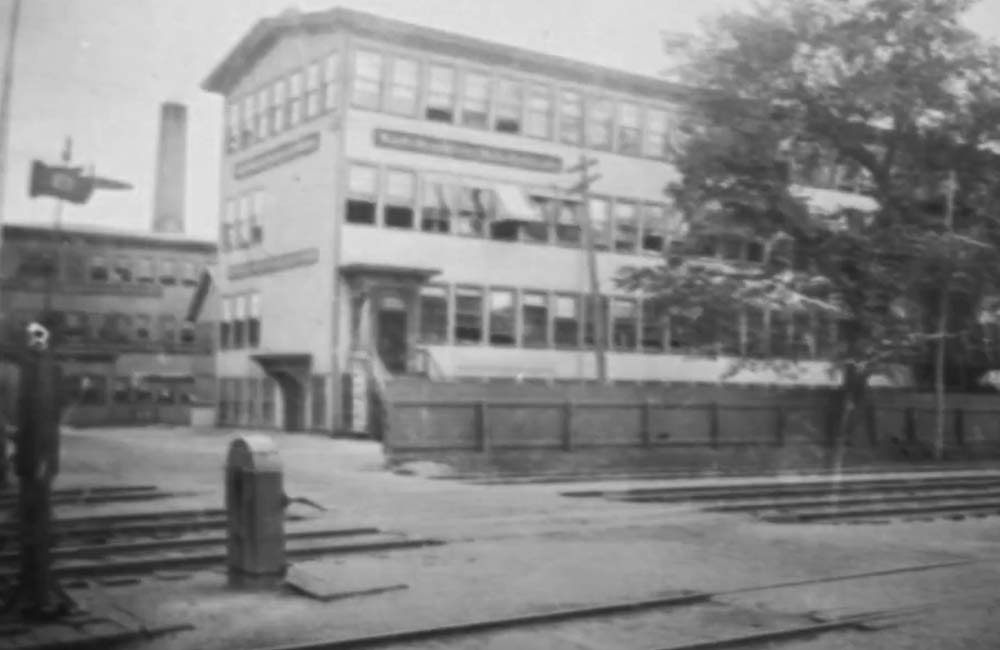
Bates & Bacon Watch Case Building, Where the Great Fire Started
Fighting the Great Fire
Eventually, all five units of the Attleboro Fire Department were on the scene. Strong southwest winds fanned the flames and by 1:00 am, the Bates & Bacon Watch Case building was smoldering in ruins.
The fire remained out of control—jumping down Mill Street and burning several adjacent structures. This included the Hayward and Briggs building across the street. By the time the North Attleboro firefighters arrived, the fire has been contained to the north in the direction of Park Street.
The north side was easier to control for several reasons. For one, the wind started to die down. There was also a small road, called Maiden Way, that separated buildings enough to stop the fire. (It also helped that buildings to the north had slate roofs.)
On the West side, the fire raged on. It eventually engulfed every structure between Mill Street and Capron Street. The blaze also jumped across Union Street and burned the firehouse, the Grants Lumber and Carpentry business, and several other homes and businesses.
As the fire continued, William Luther, the superintendent of the water department, had a realization. There was not enough water pressure to fight the fire because of the ongoing construction of the Union Street water pipes.
Luther ran to the site of the fire. When he got to Mill Street, he rushed in between burning buildings and opened the valve that allowed for additional water to be used. He ended up suffering severe burns but survived.
Photos of the destruction from the Great Fire of 1898 from our historic photo collection. Use only with credit to the Attleboro Area Industrial Museum.
How much of Attleboro was damaged? How many lives were lost?
In a couple of hours, a 3-4 acre chunk of Attleboro’s industrial heart lay in smoldering ruins.
Amazingly, no one died as a result of the fire—likely because it occurred overnight. It’s possible that many people would have been killed if the fire had taken place when factories were filled. It should also be noted that there was one death by heart attack.
What other help did Attleboro receive fighting the fire?
The Taunton, Pawtucket, and Providence firefighters eventually arrived on the scene—but too late. The Providence Fire Department (which arrived by train at 2:20 am) did assist in extinguishing the final flames.
Could the fire have been any worse?
It is lucky that the fire stopped on Dunham Street. This meant that the local gas company (and its very large gas tank) were not engulfed in flames. Had the gas tank exploded, much of the surrounding area would have been devastated.
As previously mentioned, the presence of Maiden Way also helped to stop the fire from spreading further north.
Which buildings were burned and which were spared?
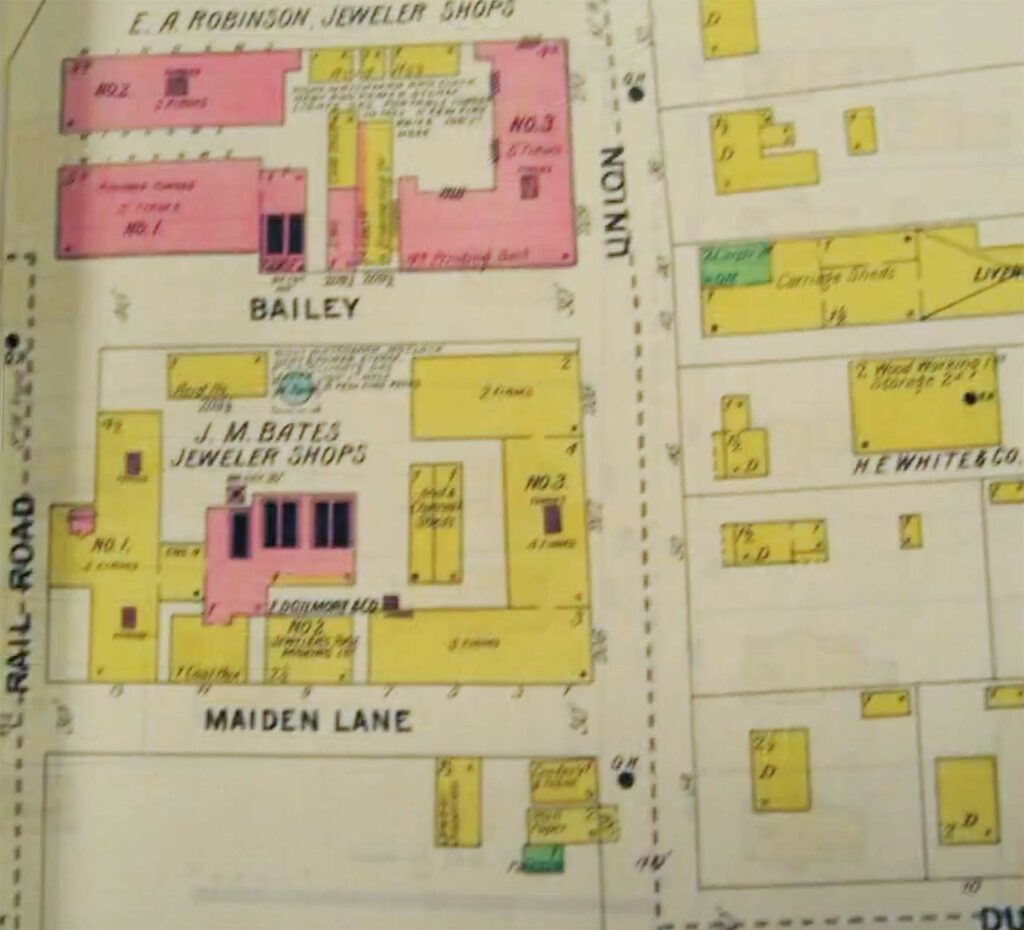
Part III:
Aftermath
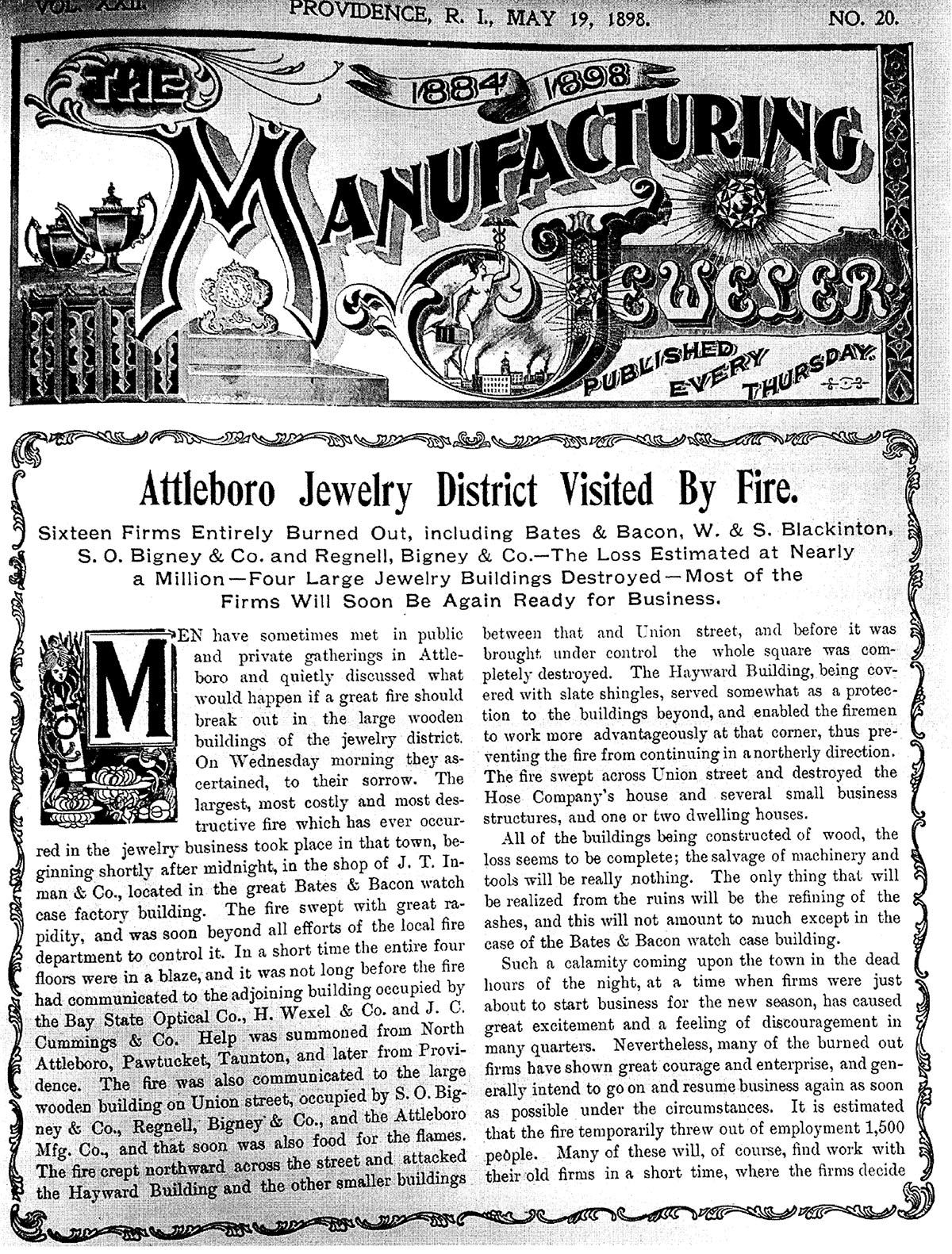
Our salesmen will be out in ten days with our magnificent new line of High Grade Chain — the best on earth. Wait for them; it will pay you.”
– S.O. Bigney & Co. Advertisement in “Manufacturing Jewelry,” the morning after the Great Fire.
When the sun rose the next morning, the sheer intensity of the fire was obvious to all. In many areas, nothing was left except for bare foundations.
Even materials inside of so-called “fire-proof” brick vaults were destroyed. It should be noted that metal vaults survived much better.
The next morning, as firefighters continued to put out hotspots, the area became a tourist attraction (see photo below.) People rode up by train from Providence and Taunton to take a look at the burned areas. Nearby towns also sent representatives to encourage businesses to rebuild in their towns—instead of in Attleboro.
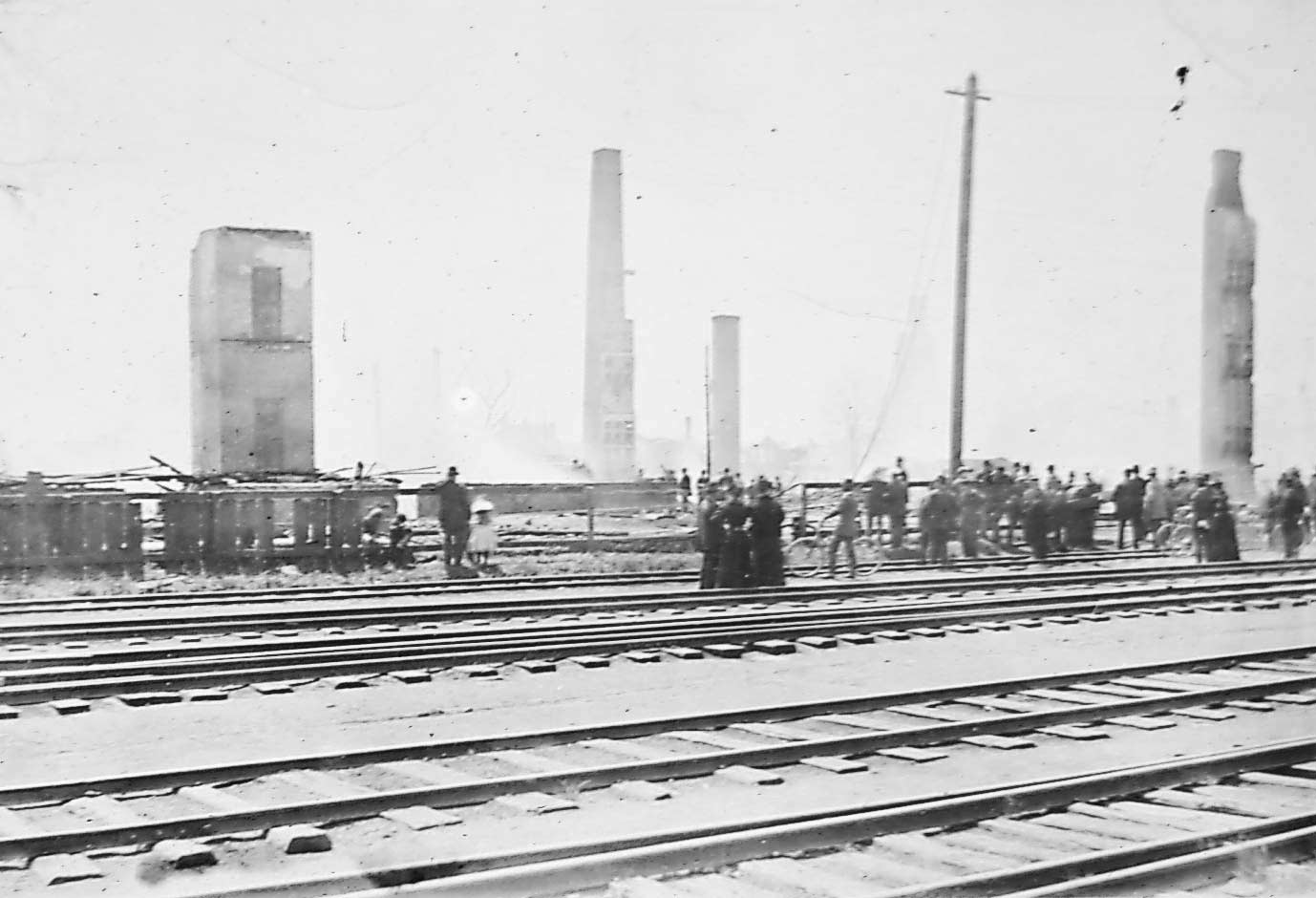
Ruins from the Great Fire of 1898 became a tourist attraction. Image from our historic photo collection. Use only with credit to the Attleboro Area Industrial Museum.
Back to Work: Rebuilding After the Great Fire
Many of the structures that were burned were partially or fully insured. Unfortunately, the materials inside the structures were not. In total, at least 19 businesses were destroyed with about $750,000 in damages. (Over $25 million in today’s money.)
Incredibly, business conditions were so favorable that the Attleboro jewelry industry was able to recover fairly quickly. Just one year later, the Bates company had a new factory on County Street. Of the larger businesses, only the Blackington company left the city, and two other businesses closed for good. Even the Bignee company, which at first could not find enough space to rebuild, ended up back in Attleboro after a short time in Providence.
Over 3,000 workers were out of jobs as a result of the fire. In addition, many of their valuable personal tools were destroyed. Thankfully, the fact that businesses responded quickly meant that more workers were able to be retained.
Despite the damage that the fire caused, Attleboro continued to march on in the Jewelry industry—eventually becoming the city that produced the World Series trophy, championship rings, and much more. It has even been called the hub of the jewelry world.
"...those who know Joseph M. Bates feel confident that new and better buildings will soon be erected on the site of those destroyed Wednesday morning."
The Manufacturing Jeweler – May 19, 1898
Plan Your Visit
Want to Learn the Full Story?
Museum Hours
Thursday & Friday: 10AM - 4PM
Saturday: 10AM - 2PM
Visit for Free
Donations help keep our museum running, but visiting is free.
Guided Tours
Adults: $4, Children $3.

